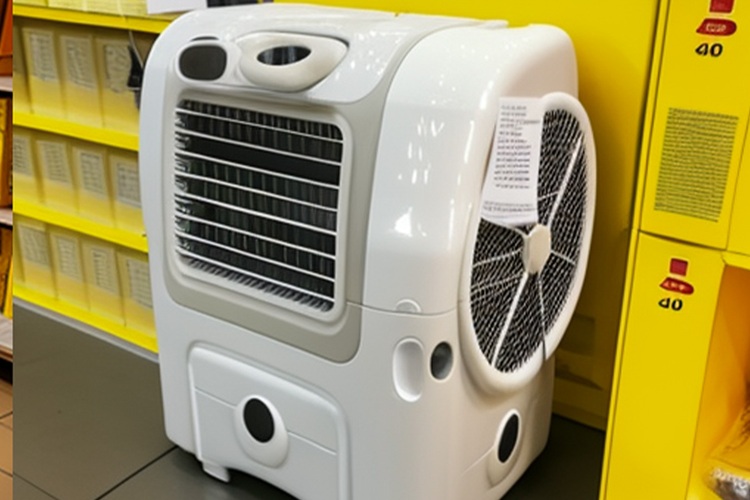How Clothes Dryers Work and How They Help Clothes Dry Faster
Clothes dryers are machines that help wet clothes become dry by using heat and air movement. This article explains the different types of dryers, how they move air, and the ways they make everyday laundry easier. Readers will learn what happens inside a dryer step by step and how it helps clothes dry more quickly and evenly.

What are the basic components of a clothes dryer?
A typical clothes dryer consists of several key components that work together to dry clothes effectively. The main elements include:
-
Drum: This is the large cylinder where clothes are placed. It rotates to tumble the clothes, allowing even heat distribution and airflow.
-
Heating element: Responsible for generating the heat needed to dry clothes. In gas dryers, this is replaced by a gas burner.
-
Blower or fan: Circulates hot air through the drum and pushes moist air out through the exhaust vent.
-
Thermostat and thermal fuse: Control the temperature inside the dryer to prevent overheating and ensure safety.
-
Timer or moisture sensor: Determines the duration of the drying cycle based on either a set time or the moisture level in the clothes.
-
Lint filter: Captures lint and debris from clothes to prevent clogging and maintain efficiency.
Understanding these components can help users troubleshoot issues and maintain their dryers effectively.
How does the drying process work in a clothes dryer?
The drying process in a clothes dryer involves several steps that work together to remove moisture from fabrics:
-
Heating: The dryer’s heating element or gas burner warms up the air inside the drum.
-
Air circulation: The blower or fan draws in room-temperature air, passes it over the heating element, and circulates the hot air through the tumbling clothes.
-
Moisture evaporation: As the hot air circulates, it causes the water in the damp clothes to evaporate.
-
Tumbling action: The rotating drum tumbles the clothes, exposing all surfaces to the hot air and promoting even drying.
-
Moisture removal: The moist air is then expelled through the exhaust vent, carrying away the evaporated water from the clothes.
-
Continuous cycle: This process continues until the clothes reach the desired dryness level, as determined by the timer or moisture sensor.
This efficient process allows clothes dryers to dry fabrics much faster than air drying, especially in humid or cold climates.
What factors affect dryer efficiency and drying time?
Several factors can influence how quickly and efficiently a clothes dryer operates:
-
Load size: Overloading the dryer can reduce airflow and increase drying time. It’s important to follow the manufacturer’s recommendations for load capacity.
-
Fabric type: Different fabrics have varying moisture retention properties. Heavier fabrics like denim or towels typically take longer to dry than lightweight materials.
-
Initial moisture level: Clothes that have been spun at a higher speed in the washing machine will have less moisture and dry faster.
-
Dryer maintenance: Regular cleaning of the lint filter and exhaust vent ensures proper airflow and efficient operation.
-
Dryer settings: Using the appropriate heat setting for each fabric type can optimize drying time and protect clothes from damage.
-
Ambient conditions: The temperature and humidity of the room where the dryer is located can affect its performance.
By considering these factors, users can optimize their dryer’s performance and reduce energy consumption.
How can users maximize dryer efficiency and reduce drying time?
To get the most out of a clothes dryer and minimize drying time, consider the following tips:
-
Sort clothes by fabric weight and type to ensure even drying.
-
Clean the lint filter before every load to maintain proper airflow.
-
Use dryer balls or clean tennis balls to help separate clothes and increase air circulation.
-
Avoid overloading the dryer, which can impede airflow and increase drying time.
-
Remove clothes promptly when the cycle ends to prevent wrinkles and reduce the need for ironing.
-
Consider using the moisture sensor settings if available, as they can more accurately determine when clothes are dry.
-
Perform regular maintenance, including cleaning the exhaust vent, to ensure optimal performance.
By implementing these strategies, users can improve their dryer’s efficiency and reduce overall drying time.
What are some common features found in modern clothes dryers?
Modern clothes dryers often come equipped with a variety of features designed to enhance performance, convenience, and energy efficiency:
-
Moisture sensors: These detect the moisture level in clothes and automatically adjust drying time, preventing over-drying and saving energy.
-
Multiple heat settings: Allow users to select the appropriate temperature for different fabric types, reducing the risk of damage to delicate items.
-
Steam functions: Some dryers offer steam cycles to reduce wrinkles and freshen clothes.
-
Reverse tumbling: This feature changes the direction of the drum’s rotation to minimize tangling and promote even drying.
-
Smart connectivity: Wi-Fi-enabled dryers can be controlled and monitored via smartphone apps, offering convenience and real-time updates.
-
Energy-efficient modes: Many dryers now include eco-friendly settings that use lower temperatures and longer drying times to save energy.
-
Large capacity drums: Newer models often feature larger drums to accommodate bigger loads, potentially reducing the number of cycles needed.
These features can contribute to more efficient drying, better fabric care, and improved user experience.
Clothes dryers have revolutionized the way we handle laundry, offering significant time savings and convenience. By understanding how these appliances work and implementing best practices for their use, consumers can maximize efficiency, reduce energy consumption, and extend the lifespan of both their clothes and their dryers. As technology continues to advance, we can expect further improvements in dryer performance and energy efficiency, making this essential appliance even more valuable in our daily lives.




